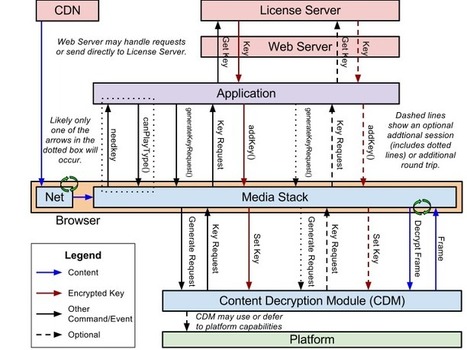Encrypted Media Extensions provides an API that enables web applications to interact with content protection systems. Learn how to allow playback of encrypted audio and video.
Research and publish the best content.
Get Started for FREE
Sign up with Facebook Sign up with X
I don't have a Facebook or a X account
Already have an account: Login
Monitoring innovations in post-production, head-end, streaming, OTT, second-screen, UHDTV, multiscreen strategies & tools
Curated by
Nicolas Weil
 Your new post is loading... Your new post is loading...
 Your new post is loading... Your new post is loading...
|
|












